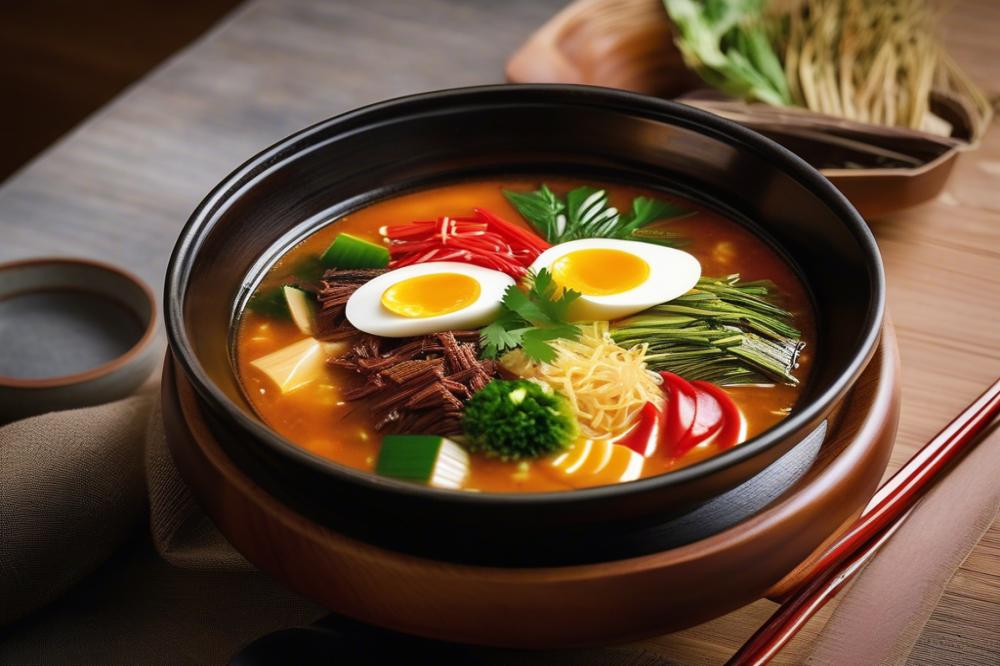Introduction to Doenjang Jjigae
Doenjang Jjigae is a classic dish that holds a special place in Korean cuisine. This hearty soybean paste stew embodies warmth and comfort, making it a staple in many households. With its earthy flavors and rich aroma, it brings a sense of home to dining tables across Korea and beyond.
The origins of this dish trace back centuries. Traditionally, it has been made by Korean families using locally sourced ingredients. A simple jjigae recipe can evoke memories of childhood moments spent around the kitchen. Its popularity arises from not only its taste but also its nutritional value. Many consider this dish comfort food due to its ability to nourish both the body and soul.
Fermented soybean paste serves as the heart of the stew, delivering depth and a hint of umami. Tofu often accompanies this main ingredient, providing a soft texture that contrasts beautifully with the other elements. In addition to these, various vegetables and mushrooms are commonly added, enhancing flavor and richness. Cooking tips can be found in many resources, but even ease of preparation makes it accessible for even novice cooks. These easy recipes allow anyone to experience the joys of Doenjang Jjigae.
What is Doenjang Jjigae?
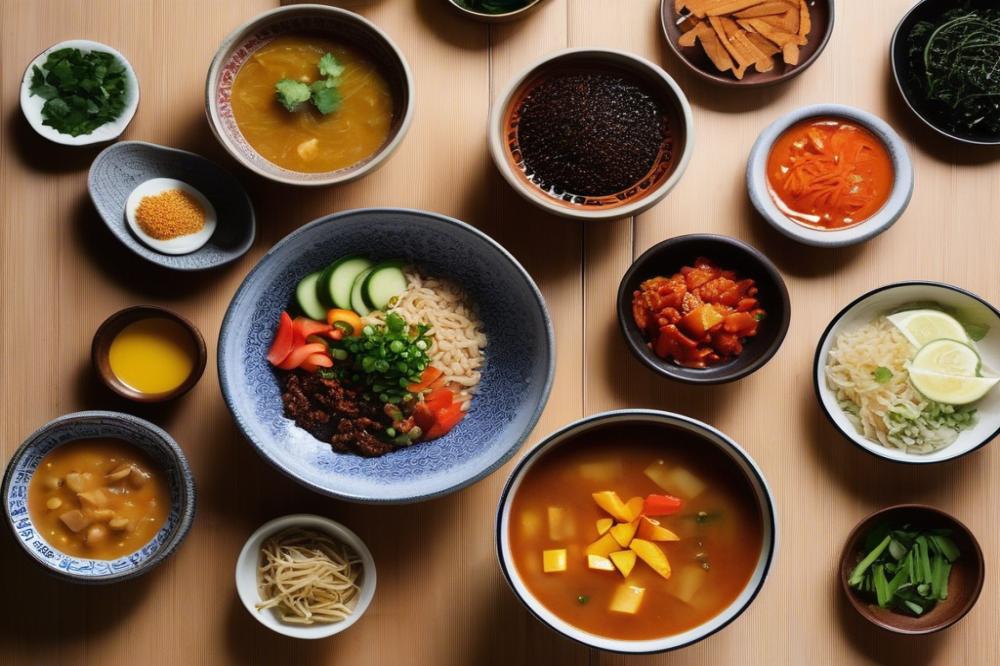

Doenjang Jjigae is a popular jjigae recipe, which is a kind of stew in Korean cuisine. This dish features a base of fermented soybean paste, known as doenjang, which provides depth and richness. fermented soybean paste plays a crucial role in Korean cooking, serving as a key ingredient in many traditional recipes. It adds a savory umami flavor, distinguishing Korean dishes from others.
As a comfort food, this stew warms the soul and is often enjoyed on a chilly day. The soybean paste is not only delicious, but it also brings health benefits, offering protein and essential nutrients. While the traditional version typically includes tofu and various vegetables, the versatility of this dish allows for many ingredient variations. Common additions may be zucchini, radishes, and even mushrooms, each contributing their unique taste.
Cooking tips for Doenjang Jjigae are essential for achieving the best results. Adjusting the amount of doenjang can help tailor the stew to individual preferences. Some people prefer a stronger flavor, while others may enjoy a milder taste. Recipes for this dish can be quite simple, making it accessible for beginner cooks and allowing for spontaneous creativity in the kitchen.
Making this vegetable stew is an excellent way to use up ingredients you have on hand. Whether it’s leafy greens or leftover vegetables, they can easily find their way into the pot. This adaptability is part of what makes the stew beloved among many households. By incorporating seasonal ingredients, you can enhance the flavor and nutrition of the dish, keeping family meals fresh.
Ingredients List and Cooking Instructions
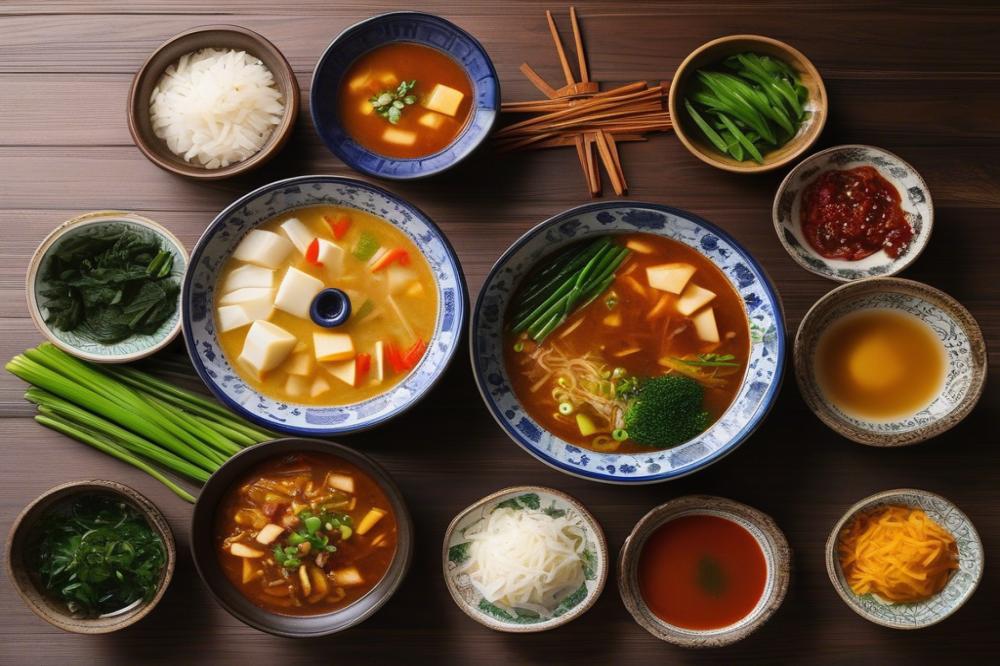

To create a delicious Doenjang Jjigae, gather the following ingredients. This traditional Korean dish combines flavors that make for a comforting meal. Here’s what you’ll need:
- Fermented soybean paste (Doenjang) – 3 tablespoons
- Tofu – 200 grams, cubed
- Zucchini – 1 medium, sliced
- Korean radish – 100 grams, sliced
- Mushrooms (shiitake or button) – 100 grams, sliced
- Onion – 1 medium, sliced
- Green chili pepper – 1, sliced
- Garlic – 3 cloves, minced
- Water – 4 cups
- Optional: Green onions and sesame oil for garnish
Now, let’s dive into the cooking process. Follow these simple steps to whip up this hearty vegetable stew.
Cooking Instructions
First, take the time to prepare your vegetables and tofu. Slice everything as listed earlier. This helps all the ingredients cook evenly. Next, in a pot, combine the water and the fermented soybean paste. Bring this mixture to a boil. It will start to smell wonderful as the flavors meld together.
Once boiling, add the onion, garlic, and Korean radish. These ingredients have a unique taste that enhances the soup. Cook them until they soften, about five to ten minutes. After that, toss in the zucchini, mushrooms, and cubed tofu. Simmer this mixture until all the vegetables are cooked through, which usually takes another ten minutes.
Finally, stir in the sliced green chili for an extra kick. This jjigae recipe can be adjusted based on your spice preference. If desired, garnish your dish with chopped green onions and a drizzle of sesame oil. These final touches elevate the flavors and add a nice finish to the meal.
Enjoy this comforting stew warm, paired with rice for a complete Korean cuisine experience. Cooking tips to remember include adjusting the amount of water for your preferred consistency and experimenting with different vegetables.
Nutritional Benefits of Ingredients
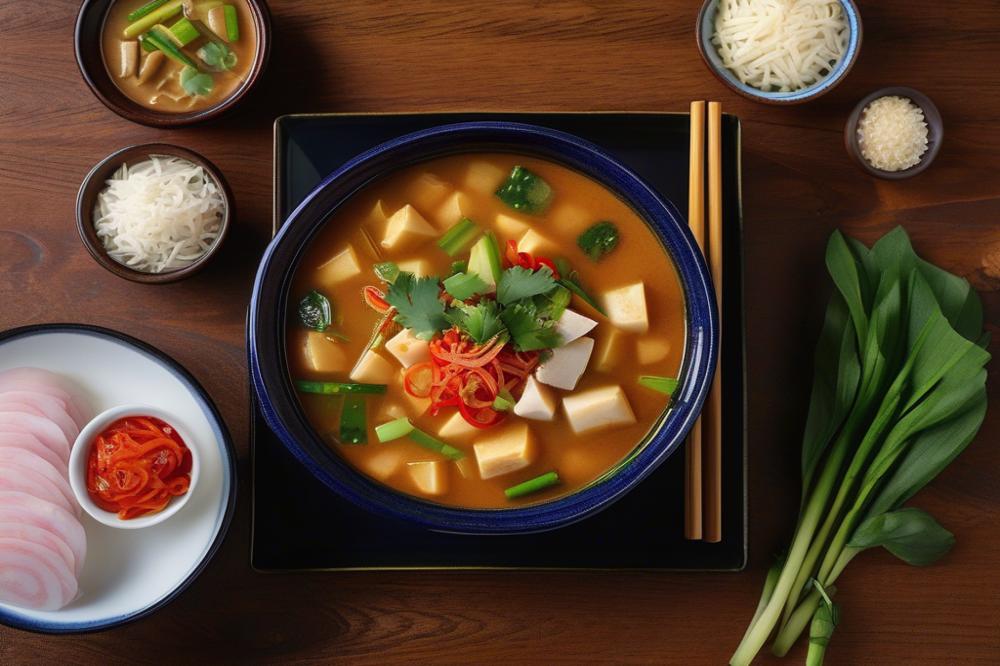

Doenjang Jjigae, a traditional Korean dish, offers a wealth of nutrition from its ingredients. Each element plays a vital role in boosting health. Let’s take a closer look at the benefits of each component.
Fermented Soybean Paste
This key ingredient is rich in protein and probiotics. Protein helps build and repair tissues in the body. Probiotics, on the other hand, promote gut health. They support digestion and can improve overall well-being. Including fermented soybean paste in your jjigae recipe enhances the flavor, too.
Tofu
Tofu is an excellent source of both protein and calcium. It comes from soybeans, making it a plant-based protein option. Calcium is essential for strong bones and teeth. This ingredient contributes a creamy texture to the stew, making it even more enjoyable. You might find that using tofu brings a satisfying heartiness to your comfort food.
Vegetables
Adjusting the array of vegetables in your stew can maximize its health benefits. Fresh produce provides vitamins, minerals, and fiber. Nutrients like vitamin C bolster the immune system, while fiber aids digestion. Mushrooms add flavor and unique textures, which enhance the overall dish. Incorporating seasonal vegetables allows for variety and freshness in every bite.
Overview of Health Benefits
Consuming a vegetable stew, like jjigae, provides numerous health advantages. Dishes filled with vegetables can reduce the risk of chronic diseases and promote heart health. Comfort food doesn’t need to sacrifice nutrition. An easy recipe with wholesome ingredients encourages a balanced diet. Eating a bowl of hot stew can also foster well-being, both physically and mentally. Who doesn’t enjoy a warm, nourishing meal?
Cooking Tips for Perfect Doenjang Jjigae
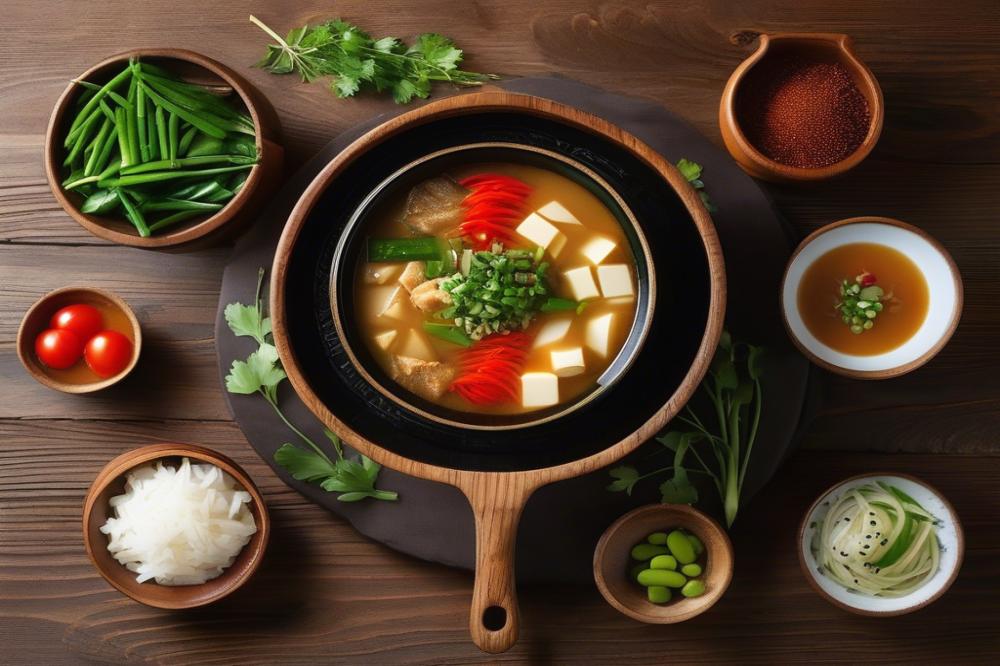

Choosing the right ingredients is essential for authentic flavor in your jjigae recipe. Korean cuisine relies on fresh and high-quality produce. Opt for seasonal vegetables to enhance the taste. Popular choices include zucchini, radish, and green onions. Each brings its own nutrition and flavor profile to the dish. Don’t forget mushrooms; they add richness and umami to the stew. While tofu is a staple, be mindful of selecting firm varieties that hold their shape during cooking.
Adjusting the level of spiciness can be a personal touch. If you prefer a milder flavor, use less gochugaru, the Korean red pepper flakes. Alternatively, add more for a kick that warms the soul. Balancing the saltiness is also important. The fermented soybean paste you choose can vary in salinity. Taste your stew as it cooks and add water if it becomes too salty. Small increments of doenjang can enhance flavor without overwhelming the palate.
Consider variations and additions to make this comfort food even more satisfying. Seafood, like clams or shrimp, can introduce a delightful oceanic taste. Simply add them in the final stages of cooking to prevent overcooking. Additionally, other vegetables like carrots or leafy greens can provide a nutritional boost and color. Experimenting with different ingredients keeps your vegetable stew exciting. Recipes become unique creations with personal twists, ensuring every pot feels like a new adventure.
Final Thoughts on Doenjang Jjigae
The role of Doenjang Jjigae in Korean cuisine cannot be overstated. This hearty dish brings together the rich flavors of fermented soybean paste and fresh ingredients, creating a stew that is not just flavorful but also nourishing. Families across Korea enjoy it daily, making it a staple that warms both the body and spirit.
Trying your hand at making this dish at home can be a rewarding experience. The recipe is simple enough for anyone to follow, yet it offers the chance to customize flavors to suit your personal taste. Whether you prefer it spicier or loaded with vegetables, this stew allows for creativity.
There’s something incredibly comforting about a warm bowl of stew. The aroma fills your kitchen, inviting everyone to gather around the table. Each spoonful offers a blend of textures and tastes that can soothe the soul. Many find happiness in sharing this meal with family and friends, celebrating together over a dish that has deep roots in tradition.
Ultimately, making and enjoying Doenjang Jjigae is more than just following a recipe. It’s an opportunity to connect with Korean culture and to create memories. You might find that this simple stew becomes a cherished part of your own culinary journey.

